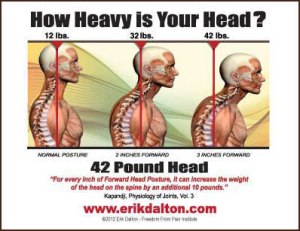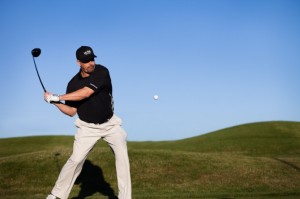“Never bend your head. Always hold it high. Look the world straight in the eye.”
Do you suffer from chronic neck and upper shoulder pain on a regular basis and can’t figure out why? Perhaps you are one of the 66-90% of the population that suffers from a very common condition know as Forward Head Posture (FHP).
FHP can be recognized when, from a profile or side view, a person’s ear is positioned in front of the shoulder rather than directly over it – in proper posture. This condition caused by poor posture causes the head to lean forward and for every inch that the head falls forward the head gains 10lbs worth of weight on the muscles of the neck and shoulders. The addition strain causes these muscles to work much harder to hold the head from flopping forward. When this type of stress is put on muscles for a long period of time, the body reacts by laying down scar tissue in the muscle fibers for stability. The strain on the muscles and the addition of scar tissue limits flexibility and causes additional pressure on the nerves in the neck which increases pain and fatigue. If left untreated and FHP becomes severe enough, it will not only cause long duration tension headaches, but can also increase blood pressure, cause disc herniations, arthritis, pinched nerves, and even distortions in the eyes and ears that could lead to mental disorders.
There is hope in correcting FHP: starting by identifying the incorrect posture through postural analysis, the following step would be to stretch out the muscles the have become tightened then strengthen the weak muscles so that you are able to hold your head up in proper posture. It’s always good to seek the advice of a professional, such as a chiropractor, to ensure there aren’t any major skeletal problems as well as a massage therapist to help ease the tension in the muscles. The same professionals can show you the proper stretches and exercises to prevent the havoc of FHP!








